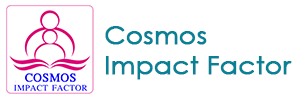
Journal Basic Info
- Impact Factor: 1.809**
- H-Index: 6
- ISSN: 2474-1655
- DOI: 10.25107/2474-1655
Major Scope
- Inflammation
- Hematology
- Child Birth
- Lung Cancer
- Physical Medicine & Rehabilitation
- Infectious Disease
- Hepatitis
- Physiology
Abstract
Citation: Ann Clin Case Rep. 2024;9(1):2562.DOI: 10.25107/2474-1655.2562
Post-Partum Acquired High-Risk Uterine Arteriovenous Malformation: Complete Embolization with PHIL 25
Paladini I*
Interventional Radiology Unit, University Hospital of Parma, Italy
*Correspondance to: Paladini I
PDF Full Text Case Report | Open Access
Abstract:
Uterine Arteriovenous Malformation (AVM) are mostly acquired after pregnancy; they normally have a high risk of bleeding due to their high-flow nature. Color-Doppler Ultrasound (US) permits an early diagnosis and is crucial to define the Peak Systolic Velocity (PSV) to plan the treatment. Embolization is, at the present time, the less invasive treatment for patients wishing to preserve fertility especially in high flow AVM without myometrial and endometrial integrity. A variety of embolic agents are used: among them, PHIL 25 is a good option as it allows the embolization of the AVM nidus without proximal embolization nor non-target venous embolization. In conclusion, acquired uterine AVMs caused by placenta accreta need to be embolized prior to scraping, even in the absence of bleeding. In general, urgent treatment of uterine AVMs may be necessary in cases of bleeding, while elective treatment could be appropriate for high flow AVMs, absence of myometrial integrity, and lack of postpartum menstruation.
Keywords:
Cite the Article:
Paladini I. Post-Partum Acquired High-Risk Uterine Arteriovenous Malformation: Complete Embolization with PHIL 25. Ann Clin Case Rep. 2024; 9: 2562.













